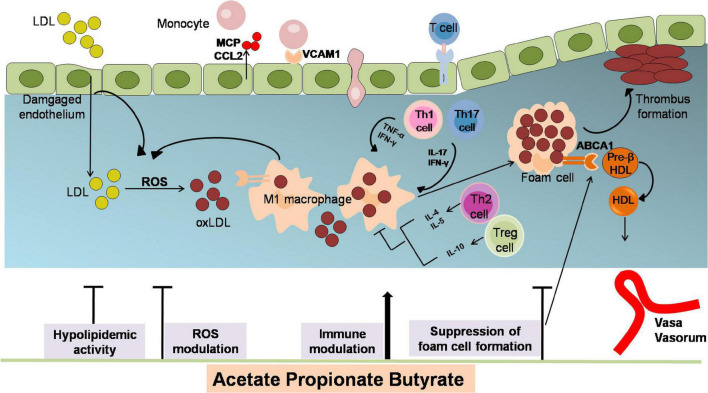FIGURE 2.
The anti-atherosclerotic effects by which SCFAs alleviates the development of AS. Atherogenesis begins with the adhesion of blood leukocytes to the activated endothelial monolayer. Activated endothelial cells express leukocyte adhesion molecules such as VCAMs that capture blood monocytes. The captured monocytes (the most numerous of the leukocytes recruited) matures into macrophages, uptake oxLDL (LDL oxidized by ROS), promote foam cells formation and ultimately yield plaque lesion. Moreover, T cells are observed to differentiate into various subsets of T cells and establish their important modulatory roles. Among them, T helper (TH)–1 and TH17 cells are atherogenic via producing pro-inflammatory cytokines [interferon-γ (IFN-γ)] and activating macrophages, while regulatory T (Treg)cells specific for oxLDL inhibit lesion formation and progression via generating IL-10 and TGF-β. The role of SCFAs in inhibiting atherosclerosis includes attenuating lipid profile and ROS, reducing monocyte adhesion, cholesterol aggregation, macrophage inflammation and foam cells formation. ABCA1, ATP binding cassette A1; CCL2, chemokine (C-C motif) ligand 2; HDL, high density lipoprotein; IFN-γ, interferon-γ; LDL, low density lipoprotein; MCP, chemotaxis protein-1; oxLDL, oxidized low-density lipoprotein; TNFα, tumor necrosis factor; Th, T helper cells; Treg, regulatory T cells; VCAM1, vascular cell adhesion molecule-1.

